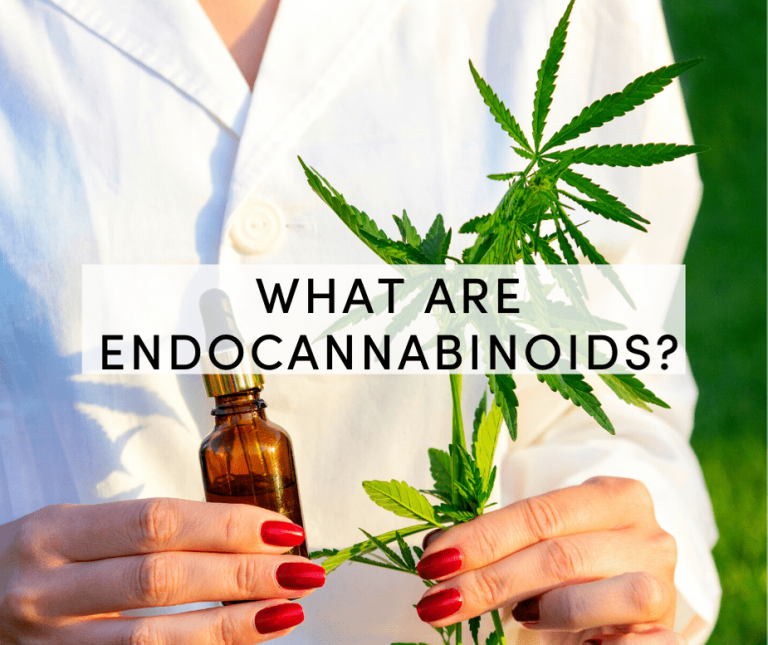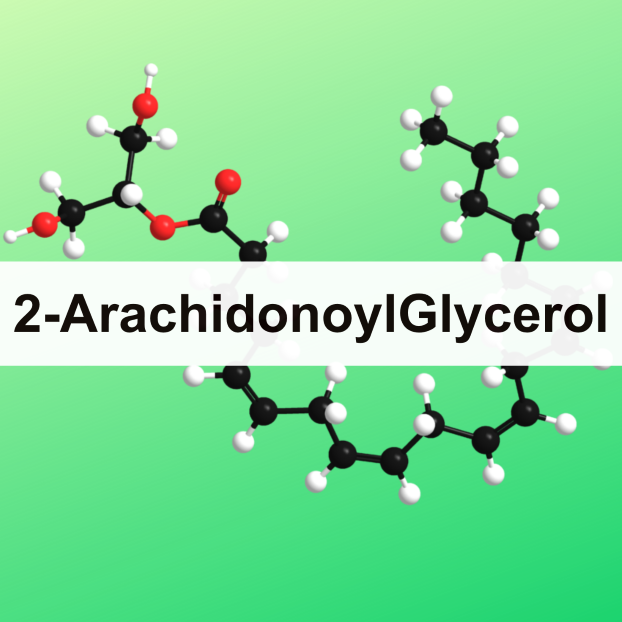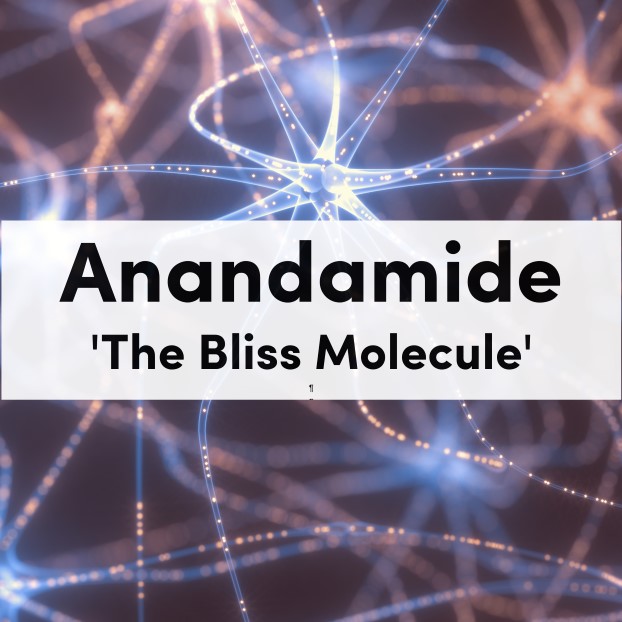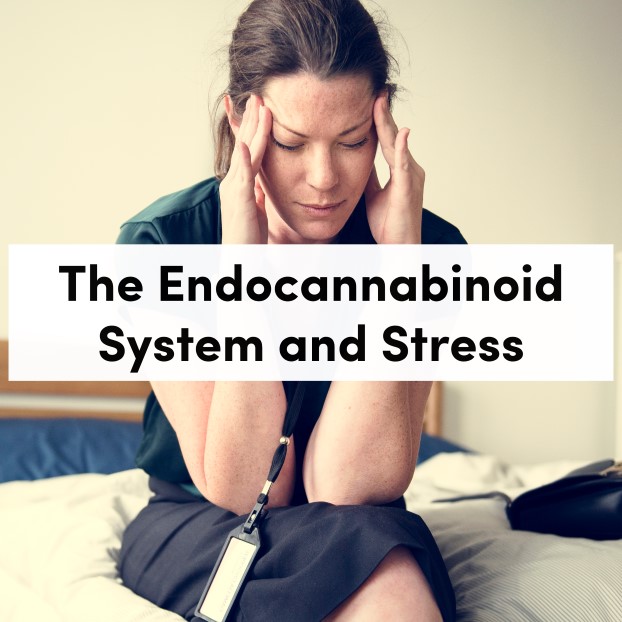What Are Endocannabinoids? A Comprehensive Explanation

Posted on March 3rd, 2021
The endocannabinoid system or ECS is a complex cell-signaling network that plays a vital role in the body. It is made up of cannabinoid receptors, endocannabinoids, and enzymes. These work together to help regulate an array of vital functions in the human body. The discovery of the endocannabinoid system is relatively new. In the early 90s, the first endocannabinoid was isolated in the human brain. Since then, scientists have been learning more and more about this complex system and its role in bodily functions. But what are endocannabinoids?
Endocannabinoids are actually similar to compounds in the Cannabis plant. However, unlike those “phytocannabinoids”, endocannabinoids occur naturally in the body. The term ‘endo’ means ‘within’, thus referring to inside the body.
In this read, we are going to take a closer look at the ECS system and endocannabinoids. We are going to look at how they work as well as their potential therapeutic uses in comparison to plant-based (phyto) cannabinoids.
What is the Endocannabinoid System?
The ECS is a complex cell-signaling biological system that helps maintain balance and regulate vital bodily functions. According to studies, the endocannabinoid system may be a potential therapeutic target in a wide array of physiological conditions. These include pain, blood pressure, energy balance, appetite stimulation, memory & learning, nausea & vomiting control, embryonic development, and immune response.
Additionally, the ECS may be a potential target for pathological conditions like multiple sclerosis, Alzheimer’s disease, Huntington’s disease and Parkinson’s disease. Although more studies are required in order to have a better comprehension of the ECS, scientists know that it involves three primary components. These include endocannabinoids, metabolic enzymes and cannabinoid receptors.
 What are Endocannabinoids?
What are Endocannabinoids?
Definition
Endocannabinoids, or endogenous cannabinoids, are naturally occurring neurotransmitters that are lipid-based. Neurotransmitters are the chemical messengers in the body that are responsible for transferring messages between nerve cells. Endogenous cannabinoids help with an array of bodily functions. However, the body produces them as necessary and this makes it hard to pinpoint the typical levels.
Types
There are two primary endocannabinoids: 2-AG and anandamide. These are made from fat-like molecules in the cell membranes and are created on-demand. Since they are synthesized and used when needed, they are not packaged and stored for later use, like most other biological molecules.
Anandamide
This endocannabinoid is derived from the Sanskrit term ‘ananda’, which translates to delight, bliss, or joy. It is often referred to as ‘the bliss molecule’, but more scientifically, it is referred to as N-arachidonoylethanolamine (AEA). The bliss molecule has been a subject of many scientific studies that aim to comprehend its effects on human beings. First identified in the early 90s by Raphael Mechoulam, it’s believed that anandamide has an impact on early-stage embryo development as well as working memory.
2-ArachidonoylGlycerol (2-AG)
The second endocannabinoid was first described in 1994. While it was previously described as a chemical compound, this is when researchers became aware of 2-AG’s affinity for cannabinoid receptors. The molecule mostly exists in the central nervous system (CNS). However, it has also been found in human milk as well as maternal bovine.
According to experts, there are other endocannabinoids in the human body, but their functions and role are yet to be definitively known.
Endocannabinoid Receptors
These latch on the cell surface and ‘listen’ to conditions outside the cell. Endocannabinoids bind or attach to these receptors, which then send messages to the endocannabinoid system in order to kick-start a response. The body has two primary cannabinoid receptors, CB1 and CB2 receptors.
- a) CB1 Receptors- These are the most abundant receptors in the brain and interact with compounds like THC to make a person high.
- b) CB2 Receptors- These primarily exist in immune cells and in the peripheral nervous system (PNS).
Scientists think there might be another cannabinoid receptor, but research isn’t conclusive. Endocannabinoids bind to both CB1 and CB2 receptors, thus leading to an array of different effects in the body, depending on the receptor’s location. For instance, endocannabinoids can target CB1 receptors in spinal nerves to alleviate pain or bind to CB2 receptors in immune cells, which sends a message that the body is experiencing inflammation.
Metabolic Enzymes
Metabolic enzymes are the third piece of the ECS triad. These enzymes are responsible for destroying endocannabinoids within the ECS once they have done their job. The two primary enzymes are MAGL, which breaks down 2-ArachidonoylGlycerol, and FAAH, which breaks down anandamide. These two enzymes only produce endocannabinoids when necessary, and no longer. This is a unique process that differentiates endocannabinoids from numerous other molecular signals in the human body like classical neurotransmitters or hormones, which can last for minutes or much longer.
Production and Release
By now we know that endocannabinoids occur naturally in the body and exist in an array of tissues and organs like the brain, circulating cells, and muscle. Endocannabinoids turn active once they bind with cannabinoid receptors. These receptors also exist throughout the body.
Studies are still ongoing on the precise physiological process that triggers or promotes the binding of endocannabinoids to the receptors. However, scientists have theorized that when a bodily system is out of balance, CB1 and CB2 receptors bind to the cannabinoids in order to rectify the issue.
The ECS system is precise. For instance, if your body temperature is out of the normal range, the endocannabinoid system works to regulate it without interfering with other bodily functions. Once the balance returns, the metabolic enzymes MAGl and FAAH quickly breakdown the cannabinoids in order to avoid overcorrecting the issue.
 What is the Role of Endocannabinoids and the ECS?
What is the Role of Endocannabinoids and the ECS?
The role of endocannabinoids within the endocannabinoid system is vast. As a matter of fact, scientists don’t fully comprehend the exact role or function of cannabinoids. However, it is clear that the ECS plays a vital role in how well the human body operates.
According to research, the endocannabinoid system plays an important role in contributing to homeostasis. This refers to maintaining stability or rather optimal conditions within the body in order to promote ideal functioning. For instance, the body maintains homeostasis for appetite, blood sugar, and temperature. According to experts, if the body strays away from the normal range, the endocannabinoid system helps it go back to the optimal level and sustain homeostasis.
According to research, the ECS helps regulate the function of the following processes:
-Sleep
-Appetite and digestion
-Mood
-Metabolism
-Pain sensation
-Learning and memory
-Reproduction system function
-Inflammation
What Are Endocannabinoids Good For?
According to studies, the endocannabinoid system may feature an array of promising therapeutic targets. While the body produces endocannabinoids, there are also numerous cannabinoids in the cannabis sativa plant.
The most popular cannabinoids are cannabidiol (CBD) and tetrahydrocannabinol (THC). These compounds also bind to cannabinoid receptors (CB1 and CB2) and also have the same effects as endocannabinoids. THC is the compound responsible for the intoxicating effects people experience after consuming marijuana. CBD, on the other hand, does not produce this effect.
Research is still ongoing to determine cannabinoids’ therapeutic benefits. A 2016 study, for example, looked into the effects of CBD on joint inflammation in rats. Scientists found that applying a topical gel containing cannabidiol reduced joint swelling and pain in rats without any side effects.
Additional studies show that cannabinoids may be helpful when dealing with an array of conditions like:
-Sleeping disturbances
-Pain in adults
-Nausea and vomiting that comes with chemotherapy
-Abnormal muscle tightness that comes with multiple sclerosis
Research is still ongoing on how stimulating or inhibiting the ECS could have health or medical benefits.
Conclusion: What are Endocannabinoids?
The ECS consists of endocannabinoids, cannabinoid receptors, and metabolic enzymes. All of these are vital to maintain homeostasis in the human body. . However, this does not imply that activating it by consuming cannabis or through other means will always make things right.
As with any other complex system in the body, the endocannabinoid system can go haywire. When chronic pathological conditions or external factors throw off homeostasis, the endocannabinoid system can begin affecting inappropriate cells. In such situations, rather than being beneficial, the ECS can actually lead to disease progression.
It is important to keep in mind that activating the ECS with cannabis is not a cure at all. Just like most biological processes, it is not that simple.
By comprehending homeostasis and the role of ECS, we can better understand why we have this system to start with and how cannabis-based therapies can actually be helpful. The presence and vital function of the endocannabinoid system explains why many diseases tend to respond to cannabis-based therapies.





